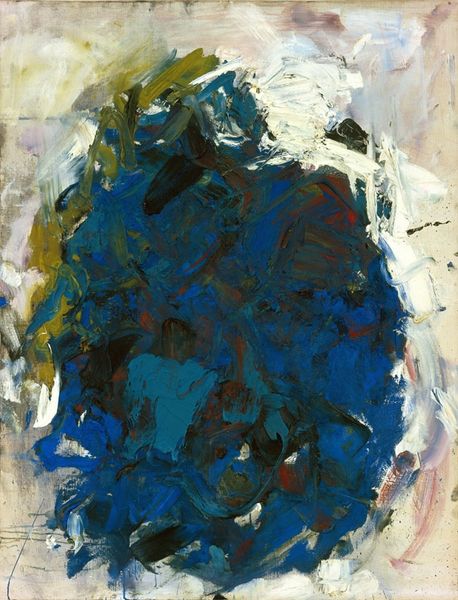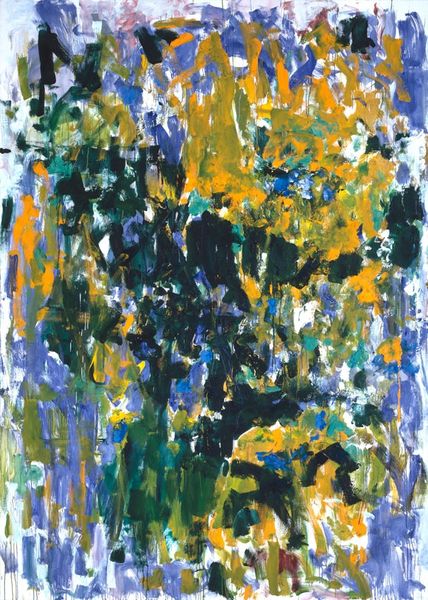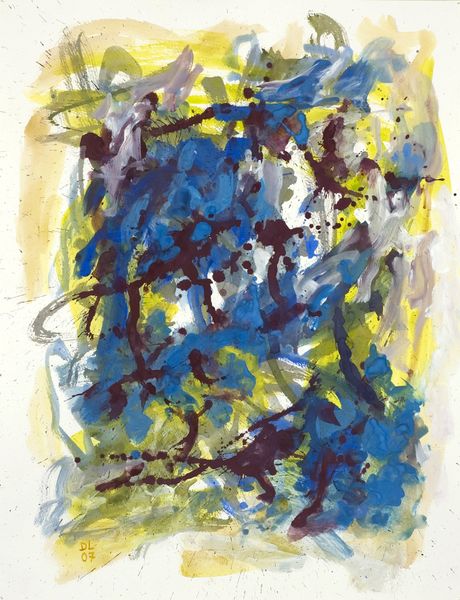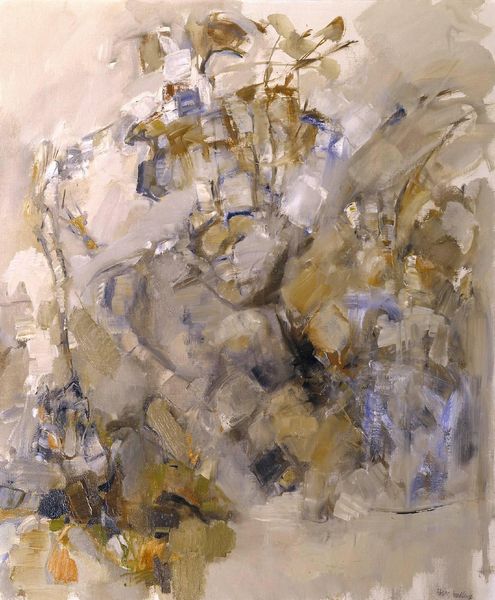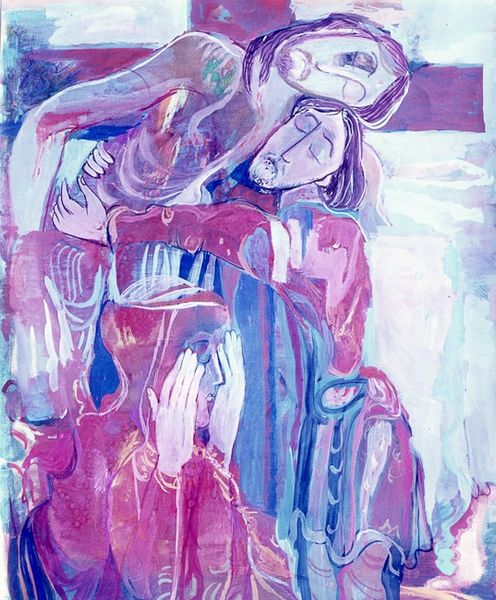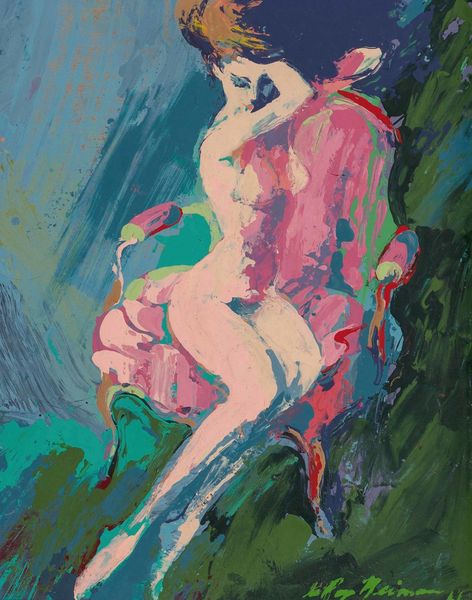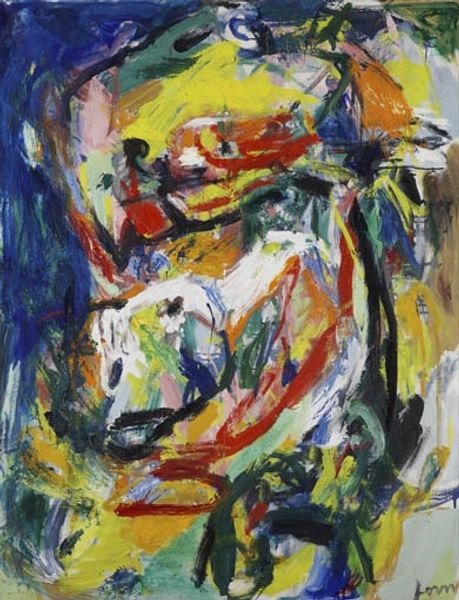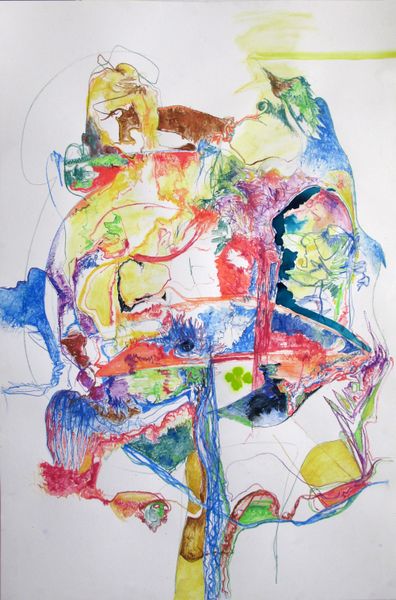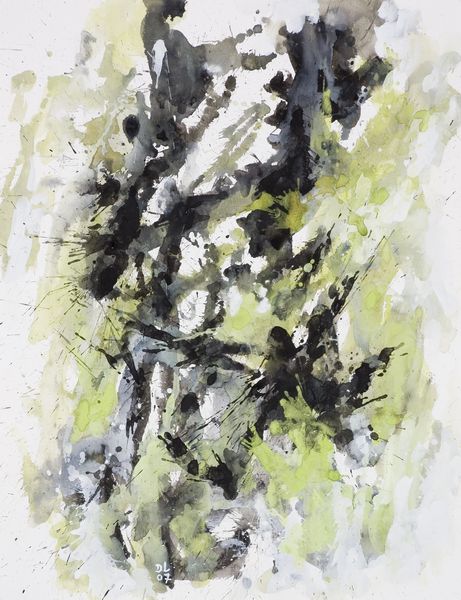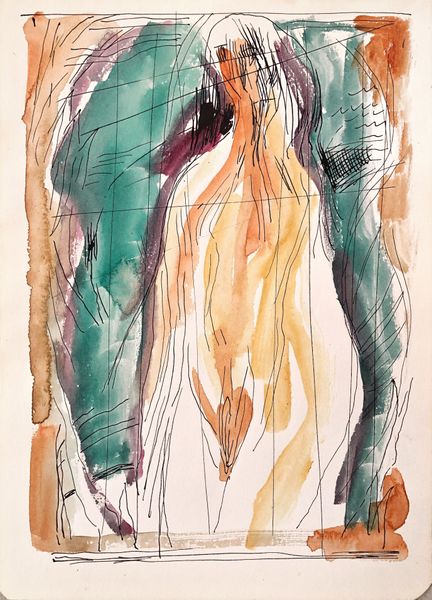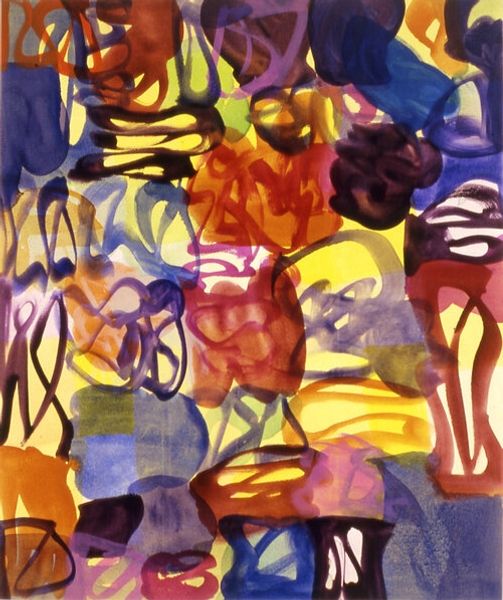
Copyright: Elaine de Kooning,Fair Use
Editor: Elaine de Kooning's "Bacchus #3," created in 1978 using acrylic paint, has such an intriguing energy. The brushstrokes feel so immediate and almost frantic, and the figure emerges and recedes depending on where you focus. How would you approach an interpretation of this piece? Curator: I see it first as a record of physical labor, the gestural marks evidence of De Kooning's movement. The way she's layered the acrylic, pushing it across the canvas, tells a story about the act of painting itself. Consider also the implied labor involved in depicting Bacchus, a figure often associated with ecstatic revelry and challenging social norms. Is this painting celebrating that, or critiquing the societal structures surrounding the representation of such figures? Editor: That’s a fascinating perspective! I hadn’t considered the labor inherent in depicting leisure. Do you think the choice of acrylic as opposed to oil is significant? Curator: Absolutely. Acrylics dry faster, allowing for that immediacy and those visible layers. It's a break from the traditional oil painting techniques that dominated so much of art history. De Kooning uses the *materiality* of acrylic to almost democratize the painting process, rejecting any preciousness that might surround the myth of the artist as some sort of removed genius. Think about what the availability of new materials does for access! Editor: So, by using acrylic in such an expressive way, she's commenting not just on Bacchus, but on the means of artistic production itself? Curator: Precisely! She challenges those high/low art distinctions through her material choices and the very visible act of creation. This brings up questions about the accessibility of both the subject and how it was represented, and to whom. Editor: That completely changes how I see the painting. I was focused on the figure, but now I understand the significance of the *how* just as much as the *what*. Thanks for illuminating that! Curator: And for pushing me to clarify those connections. Thinking about art as a record of material and labor helps us connect with it on a deeper level.
Comments
No comments
Be the first to comment and join the conversation on the ultimate creative platform.
